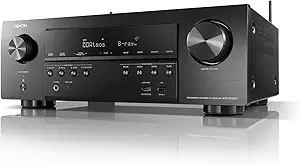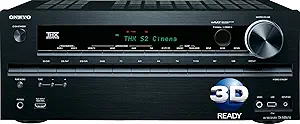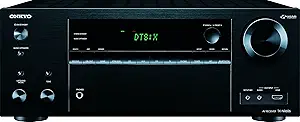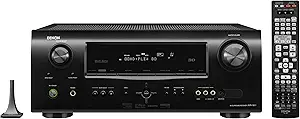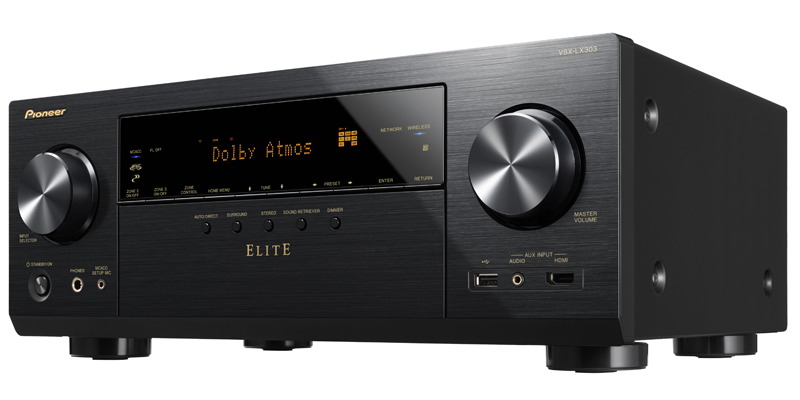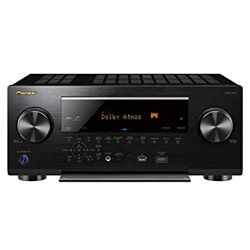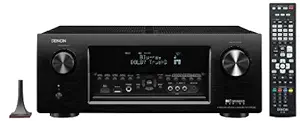Yamaha RX-A1050 VS
Yamaha RX-A2050
Pros & Cons
Yamaha RX-A1050
VSPros
- The output sound and video is stunning – the sound is deep and natural, while the video is clear and lag-free.
- It supports various modern connection systems, like AirPlay.
- Easy to set up.
Cons
- Some customers claim that their units stopped working after a couple of months.
- You may find the UI difficult to navigate through.
Yamaha RX-A2050
VSPros
- The three-zone capability is a major benefit, which makes life easier.
Cons
- It’s significantly cheaper than its competitor.
Specifications
Groups
| Specification | Yamaha RX-A1050 | Yamaha RX-A2050 |
|---|---|---|
| Connector Type | ||
| Av Inputs | 2 | 8 |
| Usb | 1 | 1 |
| Subwoofer Outputs | 2 | 2 |
| Coaxial Digital Outputs | has not | has not |
| Optical Digital Outputs | has not | has not |
| Hdmi Outputs | 2 | 2 |
| Hdmi Inputs | 8 | 8 |
| Coaxial Digital Inputs | 3 | 3 |
| Optical Digital Inputs | 3 | 3 |
| Phones | 1 | 1 |
| Additional Features | ||
| A-b Speaker Switch | ||
| Dual-zone Capability | ||
| Pure Direct Mode | ||
| Auto Power Off | ||
| Bi-amplifying | ||
| Audio Return Channel (arc) | ||
| Apple Air-play Support | ||
| Advanced Sound Retriever (asr) Technology | ||
| Three-zone Capability | ||
| Smartphone Remote Control | ||
| Functions | ||
| Internet Radio | ||
| Digital Player | ||
| Network Audio Player | ||
| Power Device | ||
| Operational Power Consumption | 400 W | |
| Standby Power Consumption | 0.1 W | 0.1 W |
| Audio Formats | ||
| Wma | ||
| Wav | ||
| Mp3 | ||
| Flac | ||
| Apple Lossless | ||
| Aiff | ||
| Aac | ||
| Connectivity Interfaces | ||
| Bluetooth | ||
| Ieee 802.3u | ||
| Ieee 802.3 | ||
| Wi-fi | ||
| Signal Processing | ||
| Upscaling Via Hdmi | up to 4K | up to 4K |
| 3d Pass-through | ||
| Video Conversion/scaling | HDMI to HDMI scaling, analog to HDMI up conversion | HDMI to HDMI scaling, analog to HDMI up conversion |
| Hdmi Pass-through | up to 4K | up to 4K |
| Radio | ||
| Preset Station | 40 | 40 |
| Tuner Bands | AM/FM | AM/FM |
| Tuner Type | digital | digital |
| Clock | ||
| Sleep Timer | ||
| Built-in Clock | ||
| Built-in Display | ||
| Colour | black | black |
| Type | fluorescent | fluorescent |
| Amplifier | ||
| Total Harmonic Distortion | 0.06 % | 0.06 % |
| Frequency Response | 20 Hz-20 kHz | 20 Hz-20 kHz |
| Output Impedance Per Channel | 8 Ohm | 8 Ohm |
| Output Power Per Channel | 110 W, 120 W, 165 W | 140 W |
| Total Output Power | 780 W | 960 W |
| Sound Features | ||
| Digital Content Protection | HDCP 2.2 | HDCP 2.2 |
| Surround System Class | 7.2 channel | 9.2 channel |
| Surround Sound Effects | CINEMA DSP 3D. SILENT CINEMA DSP. Virtual CINEMA FRONT. Virtual Presence Speaker. Virtual Surround Back Speaker | Virtual CINEMA |
| Audio D/a Converter | 24bit / 192kHz | 24bit / 192kHz |
| Built-in Decoders | ||
| Dolby True Hd | ||
| Dolby Surround | ||
| Dolby Digital Plus | ||
| Dolby Atmos | ||
| Dts:x | ||
| Media Content Source | ||
| Usb-host | ||
| Network | ||
| Bluetooth | ||
| Dimensions | ||
| Dimensions | 17.2 x 17.1 x 7.1 inches | 18.6 x 17.1 x 7.5 inches |
| General | ||
| Brand | Yamaha | Yamaha |



